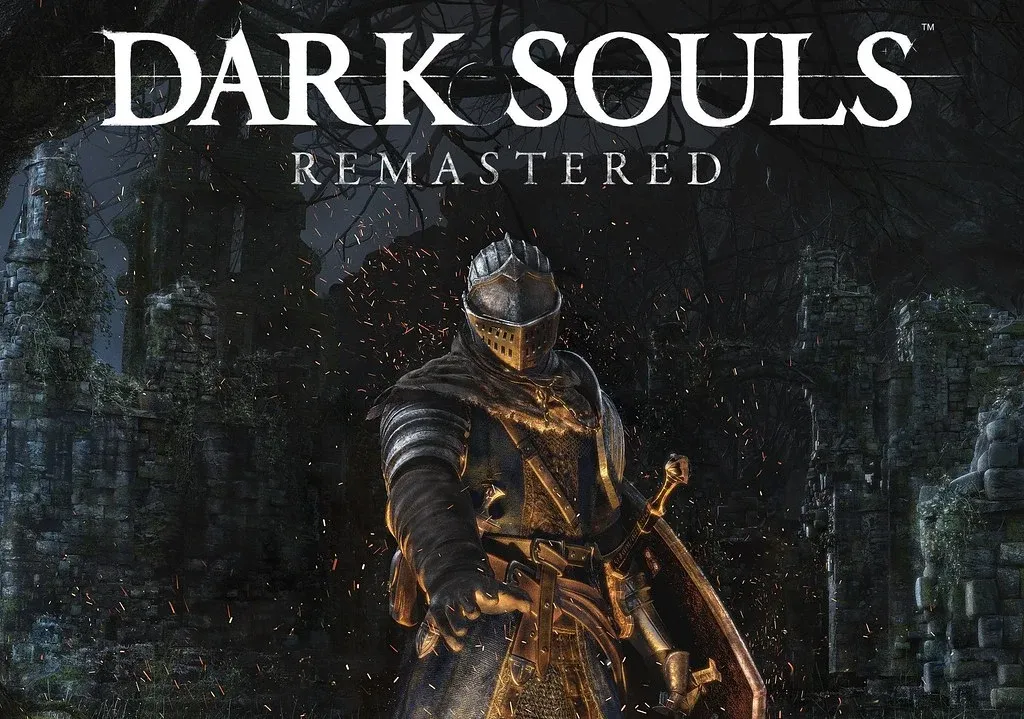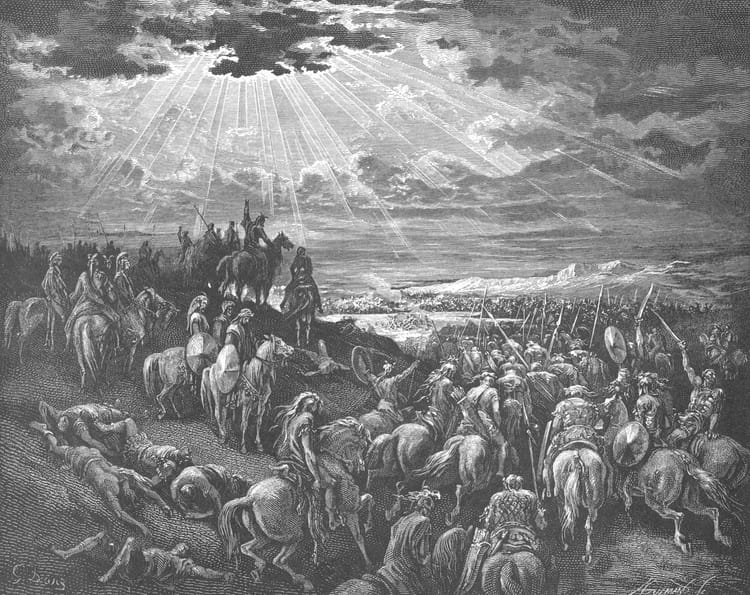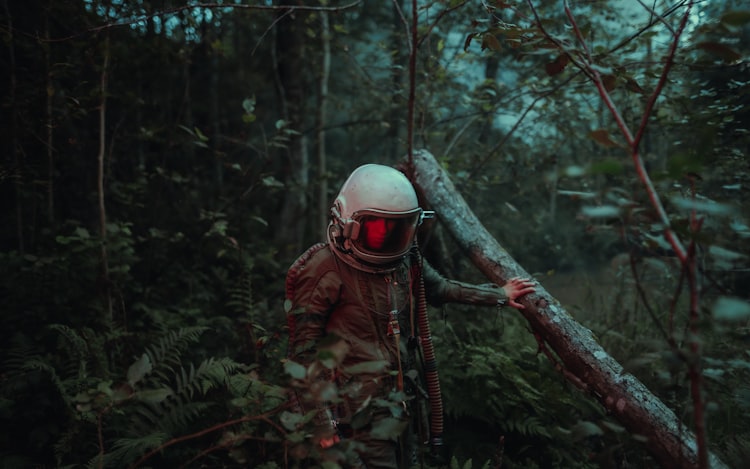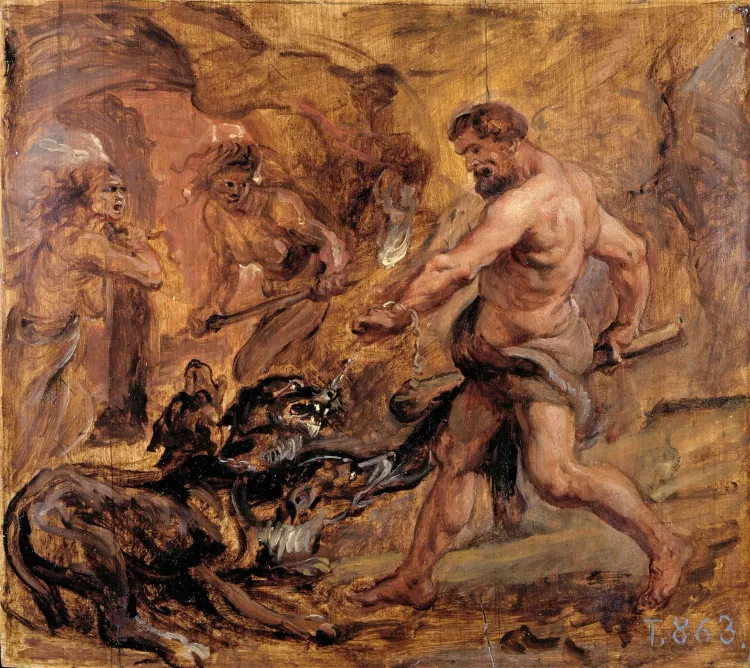The Book of the New Sun Is the Dark Souls of Books

“...river Gyoll, past Meschiane and Meschia’s, from swerve of shore to bend of bay, brings us by a commodius vicus of recirculation back to Autarch Citadel and Environs.”
Or, at least, that's how The Book of the New Sun might open (and close) if it were written by James Joyce. As it stands, its author—Gene Wolfe—is not that far off. Perhaps this is how he would have written Finnegans Wake.
Gene Wolfe (1931-2019) has legendary status not only among sci-fi readers, but writers too. He was, as they say, a writer’s writer, and the effusive praise etched into the back of his books is so over-the-top, one could be excused for initial doubts. Ursula K. Le Guin called him “our Melville.” Michael Swanwick and Patrick O’Leary called him the best living American writer—in any genre. Harlan Ellison wrote that the first volume of The Book of the New Sun “broke new ground in American literature.”
I love both science fiction and fantasy (SFF) and have been reading them my whole life; that said, it's easy to get disappointed by the offerings. For every noteworthy achievement there are legions of imitators who flood the marketplace with subpar fare. After The Lord of the Rings became a hit in the 1970s, fantasy clones have studded shelves for decades. Après Tolkien, le deluge. SFF has often been seen by the literary establishment as a kind of cultural ghetto (anytime a famous author tries their hand at it, the result is called “genre-defying” in order to excuse reviewers from admitting they have just read a genre novel), and while this is a largely unfair prejudice, there is some validity to it. Though it fancies itself “the literature of ideas,” sci-fi has often not been as “literary” as its writers have wanted it to be. Fascination with the future and technology has always been the allure, but sci-fi works are frequently burdened with flat characters, tin-eared dialogue, and shallow philosophy. Because of all this, I was a bit skeptical of the warm encomium with which Wolfe has been smothered. But my fears were unfounded. Wolfe deserves the praise.
What makes Gene Wolfe such a unique and strange author is that not only did he succeed in writing truly artistic sci-fi, he did it in such a way that no one has really tried to imitate him. He is more like Joyce, Melville, or Nabokov than the other SFF luminaries. He has no coterie of hangers-on and imitators. But as I read through the series in the past month, there was another form of media to which I kept drawing comparisons—the video game series Dark Souls.
Both Wolfe and the Dark Souls games are notorious for their high difficulty and lack of handholding. They throw you in at the deep end and expect you to survive on your own. Both have fanatical and dedicated fanbases. And I think there is something telling, in our world of endless content and the ceaseless stream of new media to “consume,” that so many people prefer the challenge both Wolfe and these games offer.
Gene Wolfe's Sui Generis Writing

Gene Wolfe was born in New York, raised in Texas, and spent most of his life in Illinois. He was a Korean war veteran and a devout Catholic who converted in order to marry his fiancée Rosemary (could she have had any other name?). He worked as an industrial engineer and here is one of those strange historical factoids: you’ve already encountered his legacy if you’ve ever eaten a Pringle. He helped develop the machinery for cooking them.
His most famous books are the tetralogy that make up The Book of the New Sun, which came out in the early 80s. Set millions (perhaps?) of years in the future, the series is a “dying Earth” tale. The sun is going out, the stars are visible in the day, and the curious remnants of humanity live among the detritus of a once great civilization that has regressed to a pseudo-medieval culture and society. The story is a first-person memoir written by the protagonist Severian, a professional torturer and executioner who has risen to become supreme ruler of this broken “Urth” and is perhaps its last hope for rebirth and the coming of the mythical New Sun.
There is a famous bait-and-switch that often dupes first-time readers. The first novel starts in a necropolis and bears all the hallmarks of high fantasy: stone barbicans and keeps, iron gates, pikemen, and lanterns. There are guilds, masters, and social castes. But if you peel back the veneer, what seems like medieval fantasy is really post-historical science fiction. The strange, wizard-like lightning attack that disorients Severian (and the reader) in the first chapter is, upon close inspection, the firing of an energy weapon. The castle tower in which he lives and works is, in fact, an old, grounded spaceship. Strange not-quite-human beings are actually aliens from other worlds (or possibly humans who have evolved differently off planet). A character with an unusual demeanor might be an android. But because the reader often knows more about Earth’s history than Severian does, part of the game is trying to piece these clues together. The most famous one, early in the going, is Severian marveling at a painting of an old knight standing in a desert near a stiff banner. It is only after a little digging that one realizes it is a photo of Neil Armstrong on the moon.
To convey to the reader that one is really interacting with a strange, alien world, Wolfe used archaic and obscure terminology, rather than lazy trope of “calling a rabbit a ‘smeerp’.” The horse-like beasts ridden by the warriors of Urth are destriers, named for the knightly warhorses of the middle ages. Monstrous entities termed smilodons roam. Just staying within the letter ‘A’, we are badgered with words like abacination, amschaspand, and apotropaic. Perhaps only David Bentley Hart would know these without looking them up. So complicated is the jargon (which sometimes Wolfe invents by combining plausible ancient Latin or Greek words) that Michael Andre-Driussi collected them into the Lexicon Urthus, an invaluable dictionary and commentary to help make sense of things.
For me, one of the most amusing things in reading about the books has been collecting other readers’ various attempts to describe such a sui generis novel. Michael Dirda said it was as if Proust had written I, Claudius and set it in space. Thomas M. Disch wrote that it was as if Star Wars was “penned by G.K. Chesterton in the throes of a religious conversion.” An amazon reviewer suggested it was like a King Crimson album adapted into a novel by Herman Melville. But my favorite one comes from The Ringer’s retrospective on Wolfe after he died:
For decades people will say it’s strange that a book this visionary and bizarre was written by someone with Gene’s background. But what does that mean, since The Book of the New Sun is a work virtually without precedent? If Henri Bergson and St. Augustine had collaboratively edited a 1930s issue of Weird Tales, this is the text they might have produced. It’s strange that it was written by anyone. That it was written by the guy who figured out how to cook Pringles is no more startling than any other possibility.

Augustine is a key interlocutor, for Wolfe was preoccupied with themes of memory and identity. Severian frequently boasts that he has a perfect memory and so is therefore supremely trustworthy. But he clearly lies and forgets things in his own narrative. The centrality of memory to identity is, of course, a central theme in Confessions, where Augustine examined his own memories in order to understand himself and helped invent the western psychological concept of the person. He marveled at the vast mansion of memory, something that can be altered and even buried, but which always persisted—except when it didn't. Who can plumb this depth, he wonders? And yet it is the source of imagination and of one’s self. Wolfe was fascinated by this interplay, and many of his novels are written from first-person perspective. As the first narrator in The Fifth Head of Cerberus remarks, with an Augustinian flourish, “I have written to disclose myself to myself.”
But while memory is a boon, making us who we are, it is also a curse. Because our memories form our habits, they make it exceedingly difficult to break them—sometimes we want to change, but we cannot, because we remember. As Severian says early on, “Memory oppresses me.” Perhaps it would be better to forget? But, paradoxically, the act of forgetting is a mystery too—for we can remember that we forget. Severian, he with the supposed perfect recall, remembers that he has forgotten. Who can understand this? Perhaps Severian is not so dishonest as he sometimes appears. As Augustine asks, if it is possible that we remember our forgetting, then do we ever truly forget?
It is sometimes remarked that Severian is an “unreliable” narrator. I tend to agree with Ada Palmer in her introduction to the first book, that the question rather misses the point. In one of his rare misses, the goodreads critic J.G. Keely complained that an unreliable narrator only works when there is an undercurrent of a counter-story beneath it that the reader can tease out, beating the narrator at their own game in a kind of intellectual contest. It is true that this is often the case, perhaps Pale Fire proving paradigmatic. But in that novel, Charles Kinbote is clearly a madman and there is no question about whether he is trustworthy. He is not. Wolfe is doing something different. Severian is unreliable, not in the sense that there is a metafictional game going on with a right answer (or two), but in the sense that we are all unreliable. All of us thread our memories and identities together to build self understanding; we do this even if we’re not obviously trying to hide anything. So does Severian. It is this that makes him such a believable protagonist.
This little discursus on memory, identity, and narration shows how richly resonant these novels can be. But it also shows how reading them can be a disorienting experience. They are not easy going. Some important elements of the whole story’s ending are depicted in a play-within-the-story towards the end of book two (who does that?). There are moments where it’s clear what is happening, but there are moments where it’s not—and debate rages to this day regarding scenes like Morwenna’s execution or the encounter with the Autarch through the Citadel painting room. Sometimes the reader knows more than Severian, making interpretation difficult; sometimes Severian knows more and seems to be hiding something. Sometimes Severian does not know what happened either.
The effect is a hallucinatory and sometimes dreamlike story. It is challenging and can be obtuse. Key narrative events can happen off-screen, referred to off-handedly. A single detail can recontextualize an entire character in retrospect. Important parts of the plot and world are communicated via implication and innuendo. But despite its difficulty, once you catch “the bug,” so to speak, it’s hard to shake. It is this kind of appeal, in the face of great challenge, that most reminds me of Dark Souls.
Praise the (New) Sun

FromSoftware’s “soulsborne” games are notorious for their difficulty, their opaque narrative style, and for their devoted fanbase. Sound familiar? I’m not the first to draw this comparison. Cameron Kunzelman made the same connection on Vice back in 2019, penning an article entitled “Before the Labyrinthine Lore of ‘Dark Souls’ There Was Gene Wolfe.”
Comprising Demon’s Souls, the Dark Souls trilogy, Sekiro, last year’s enormous pop culture hit Elden Ring, and my personal favorite, Bloodborne, the “soulsborne” games have had a dramatic impact on gaming history over the past decade. In an era where games often have lengthy tutorials, low difficulties, and cinematic narratives that compete with prestige TV, developer FromSoftware charted a totally different path, creating games heavy on atmosphere and light on dialogue or cutscenes. They throw you in at the deep end and expect you to figure it out. They evoke a kind of nostalgia for 90s era titles that were less obsessed with marketability and wide appeal, perhaps because games were not as time consuming or expensive to make then.
The unexpected smash hit of Dark Souls in 2011 was a watershed in gaming history, and many developers have since mimicked the game’s style—leading to the creation of a new subgenre called “soulslike.” Furthermore, anytime a difficult game comes out it gets referred to as the “Dark Souls of ‘X’,” becoming something of a meme. Cuphead is the Dark Souls of sidescrolling games. Escape from Tarkov is the Dark Souls of first-person shooters. Eating at Arby’s is the Dark Souls of having a working digestive tract. Hence, then, the title of this essay—The Book of the New Sun is the Dark Souls of Books.
The narrative style is the most obvious similarity, one that Kunzelman honed in on. Wolfe wrote “books you could play with,” and part of the thrill for readers was in trying to stitch together the bits and pieces and see if you could build a cohesive tapestry and make sense of the whole. Writes Kunzelman:
Some people find this ambiguity and complexity so frustrating that they don’t find it worth piecing out. Some people find a lifework here, something really worth digging into. That latter group resembles the fans of Dark Souls or The Elder Scrolls more than they do the fandoms of other science fiction or fantasy authors, and that resemblance has to do with how much they put into the series themselves.
Dark Souls’ method of storytelling is complex and slanted like Wolfe’s. Most of the narrative takes place before the game starts, the player arriving on the scene after a great catastrophe has already riven the land. A war with the ancient immortal dragons led to the golden Age of Fire, but that age has passed. Gwyn, Lord of Sunlight, has sacrificed himself to extend the Age of Fire, but this last flickering ember of civilization is on the verge of flaming out. History may be at its end. This familiar tone led one cheeky redditor to quip that “Dark Souls is The Book of the New Sun of videogames” and create Severian as his player character.
The sense of melancholy and decay from Book of the New Sun is everywhere evident in Dark Souls. The story is communicated impressionistically through environmental insinuation, flavor text, and a few lines of cryptic dialogue. This unusual approach owes itself to the visionary game developer Hidetaka Miyazaki, who drew off of events in his own life to create it. When he was a child, he would look through English-language fantasy novels, but because he couldn’t fully understand them, he’d use the pictures to dream up his own stories and fill in the blanks. The unusual multiplayer function, in which another player can suddenly interrupt your game, port over from essentially another dimension and help you, likewise derives from an episode in Miyazaki’s life, when his car got stuck in the midst of a snowstorm and he was assisted by strangers who helped him push it up the road before vanishing before he could thank them. This kind of mysterious and suggestive adventure is what gives Dark Souls such idiosyncratic appeal. Players eat it up.
Because the story is often impenetrable and confusing, most of us (myself included) rely on external authorities to help make sense of it. The most famous is the YouTuber VaatiVidya, who posts hundreds of videos explaining key segments of the games’ stories and their characters.
VaatiVidya's video explaining the story of Bloodborne, my favorite "soulsborne" game.
One can find this kind of narrative debate and assistance in the Gene Wolfe fandom, too. Multiple podcasts are dedicated to fleshing out The Book of the New Sun—among them Alzabo Soup, ReReading Gene Wolfe, and The Gene Wolfe Literary Podcast. Those up for the challenge will likely need these resources. After just a few chapters of the first book in The Book of the New Sun, I looked into Alzabo Soup and discovered I had already missed dozens of important things (interestingly enough, they mention Dark Souls in one of their early episodes, but they connect it with Michael Shea’s Nifft the Lean).
The similarities between Wolfe and Dark Souls extend beyond the narrative style, high level of difficulty, and involved fandoms, however. There is thematic overlap too. Both depict worlds in decay and despair, and both depict circular approaches to history—with Dark Souls manifesting Nietzsche’s eternal return in the endless “linking of the fire,” and The Urth of the New Sun looping back into the story like a narrative ouroboros (a word used frequently in the book, by the way). Persistent themes of death and resurrection at the end of time are present in both. And, of course, there is the way fans of both Wolfe and Dark Souls simply revisit the games and books over and over again, forsaking new media to return once more into the breach and try to figure it out, see what they missed, and immerse themselves in the same world. As the ReReading Wolfe podcast points out in a Wired interview, “You can’t read a Gene Wolfe story, you can only reread a Gene Wolfe story.” I’m already planning for my inevitable reread, aiming to draw extensively on the Lexicon Urthus and the various podcasts. Perhaps, to borrow gaming lingo, such tools will make my “NG+” run a bit easier.
What I find most appealing about this, however, is the way it militates against our current culture of “endless content” and the smorgasbord of cultural consumption that proliferates on and off the internet. Both Wolfe and Dark Souls seem to take a noble last stand for the endurance of stories that are not “consumed” and discarded but wrestled with throughout one’s life.
The Work of Art in an Age of Content Production
I have always been made uneasy by the new meaning of the word “content” and the way it functions in the online ecosystem.
With the rise of new media there has come the proliferation of “content creators,” those producing an endless cavalcade of material on YouTube and twitter and twitch and TikTok and wherever else civilization goes to meet its end. Because profit from this is driven by engagement, there is a corresponding need to produce as much as possible, as quickly as possible, designed to get as many clicks and views as possible. The end result is a mass deluge of lowest common denominator spam that clogs the internet’s arteries. This kind of endless entertainment production has bled out into other forms of media, too—affecting books, films, or what have you. But I think what has always bothered me about content, content creation, and content consumption is how infantilizing it is. As Wendell Berry points out in “The Pleasures of Eating,” to be a consumer is to be “passive, uncritical, and dependent.” This is something Bo Burnham nailed in his Inside comedy special. He sings:
But look, I made you some content
Daddy made you your favorite
Open wide
Here comes the content
It's a beautiful day
To stay inside.
Bo Burnham's song "Content" from his Inside comedy special.
The relationship of content creators to the consumer is one likewise fraught with weird entitlement and strange, mutual dependency. An average YouTuber’s comment section or Twitch stream chat is like watching a gaggle of hatchlings in a nest, necks strained upwards and mouths agape, squawking and gawking for more food, more entertainment, more media, more “content” to be released from their chosen dispenser. Such an insatiable appetite cannot be met by any human creator, either. It is simply too much. This is perhaps where generative AI will truly be able to outmatch us. Because each new piece of content is rapidly consumed and spit out, and the ravenous need for more is so mighty, seemingly only artificial intelligence can work fast enough, cheaply enough, and tirelessly enough to meet it. The internet is already trending towards a wasteland of AI-generated content blather, and we’ll likely see this increase.
I am reminded of the Writer's haunting speech from Tarkovsky’s Stalker. As the characters make their way through the dangerous Zone to the mythical room that can grant their deepest desires, the Writer (played expertly by Anatoly Solonitsyn) sits down underground and gives a tortured monologue on the burden of creating art for an audience that can do nothing more than “gobble.”
I used to think that someone would get better because of my books. No, nobody needs me! Two days after I die they will start gobbling up someone else…They don't want to know anything! All they know is how to gobble!
“Consuming” books in such a way vanquishes the author-as-creator the exact second the story is completed, as the consumer simply flies from one product to another like a locust, ingesting it whole and leaving the landscape bare while flittering off to the next. Just because it doesn’t use resources in the same manner as oil or natural gas or mineral consumption does not mean it is without lasting psychological and social effects. In such a world, the only rewarded traits a creator can possess are speed and productivity.
This is not the way Gene Wolfe thought one should read books, and it’s not the way he wrote his to be read. As he related in his essay “Sun of Helioscope,” a great story is “one a cultivated reader can read with pleasure and later reread with increased pleasure.” He had this hope for The Book of the New Sun. In his essay “The Feast of Saint Catherine,” Wolfe wrote:
Every writer with his two-cents-a-word hopes, in some little corner of his mind at least, that somewhere out there, there are a few people who will do more than read his book, pitch it away, and reach for the next one—people who will read and reread, study the cover, perhaps, in search of some clue, shelve the book and later take it out again, just to hold.
Certain readers long for this, too. As C.S. Lewis wrote, “The literary man re-reads, other men simply read. A novel once read is to them like yesterday’s newspaper.” There is great value in someone who has not yet read The Odyssey, but one would be scandalized by a reader who, Lewis argued, read it once and thought “that settles the matter.” Some books simply demand rereading, there is no other way to interact with them. Lewis’s own Till We Have Faces is like this—the end of that novel essentially demanding one flip to the front and immediately start again. So does Nabokov’s Pale Fire. Gene Wolfe’s books make this same ask, and so, in their way, militate against the acidic consumer culture that burns through stories and other media faster than it can be produced.
In its own way, I think Dark Souls does this too, encouraging the player to revisit, replay, rediscover. To deepen one’s engagement is to interact with something is become more than a passive consumer. I do not think readers (and gamers, too) want to be passive receptacles for content. They want to be engaged, constructive, and imaginative. They want to apply themselves to the text and the image and build their interpretation out of it. It is, in the end, not that different from the construction of identity that sits at the heart of both Augustine’s reflections on memory and Severian’s own self-conscious formulation—mirroring the reader’s engagement, too, as they assist in the act of creation.
And in the end, there is virtue in this kind of storytelling, a kind that draws one in and treats the reader as a complete human being, not a dependent consumer, mouth open at the end of a conveyor belt. When one reaches the end of The Book of the New Sun, or when one completes Dark Souls and links the fire once more, the most logical conclusion is to flip to the front, to hit reset, to dive in again. The story cannot be consumed because it is unconsumable. The cycle continues, the fire is linked again. The (new) sun goes down, and hastens to the place where it arose. The reader then sees that the end is also the beginning, returns with Severian to the river Gyoll where he nearly drowned and started his story, takes up his vaunted sword Terminus Est (or, in Dark Souls, the Claymore), and journeys once more, in that circular, Joycean fashion, “a way a lone a last a loved a long the / river Gyoll past Meschiane and Meschia’s, from swerve of shore to bend of bay, brings us by a commodius vicus of recirculation back to Autarch Citadel and Environs."





Member discussion